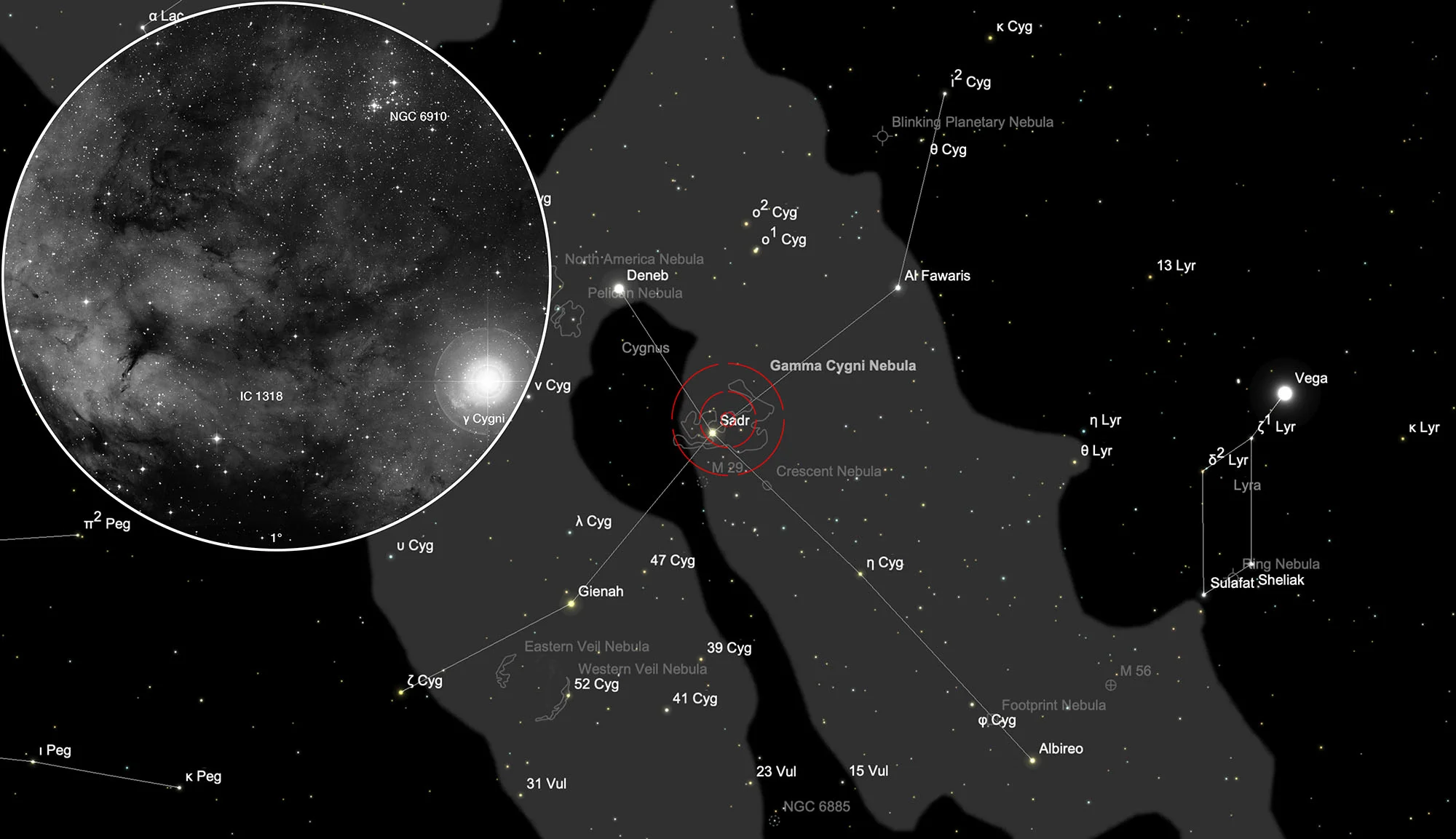Gamma Cygni Nebula (IC 1318) & Open Cluster NGC 6910
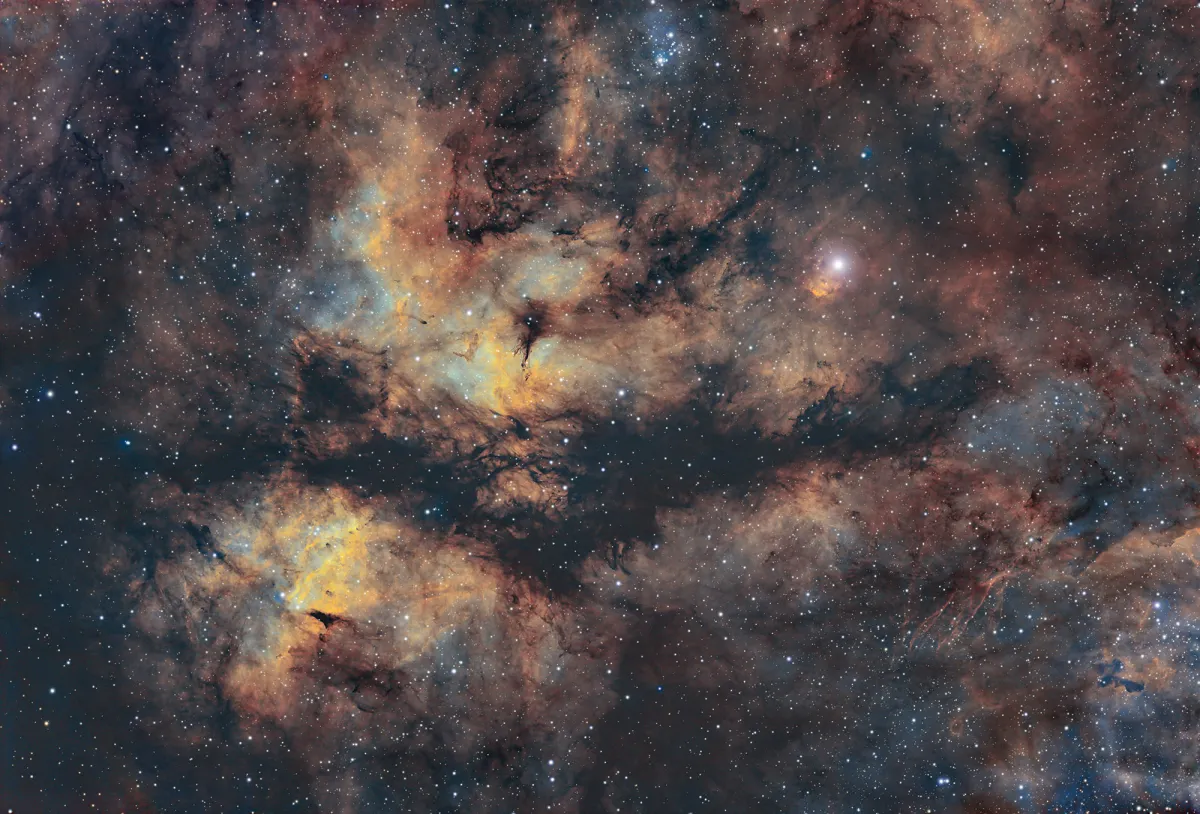
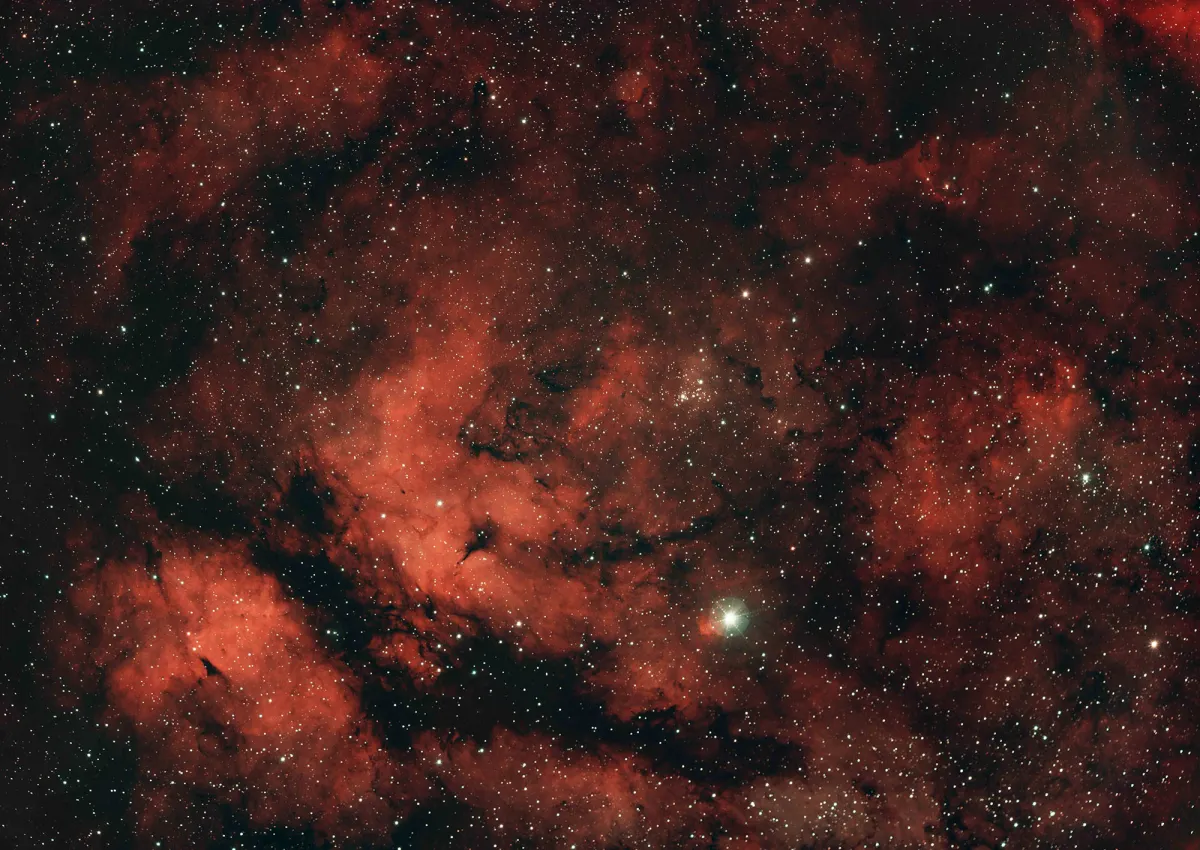

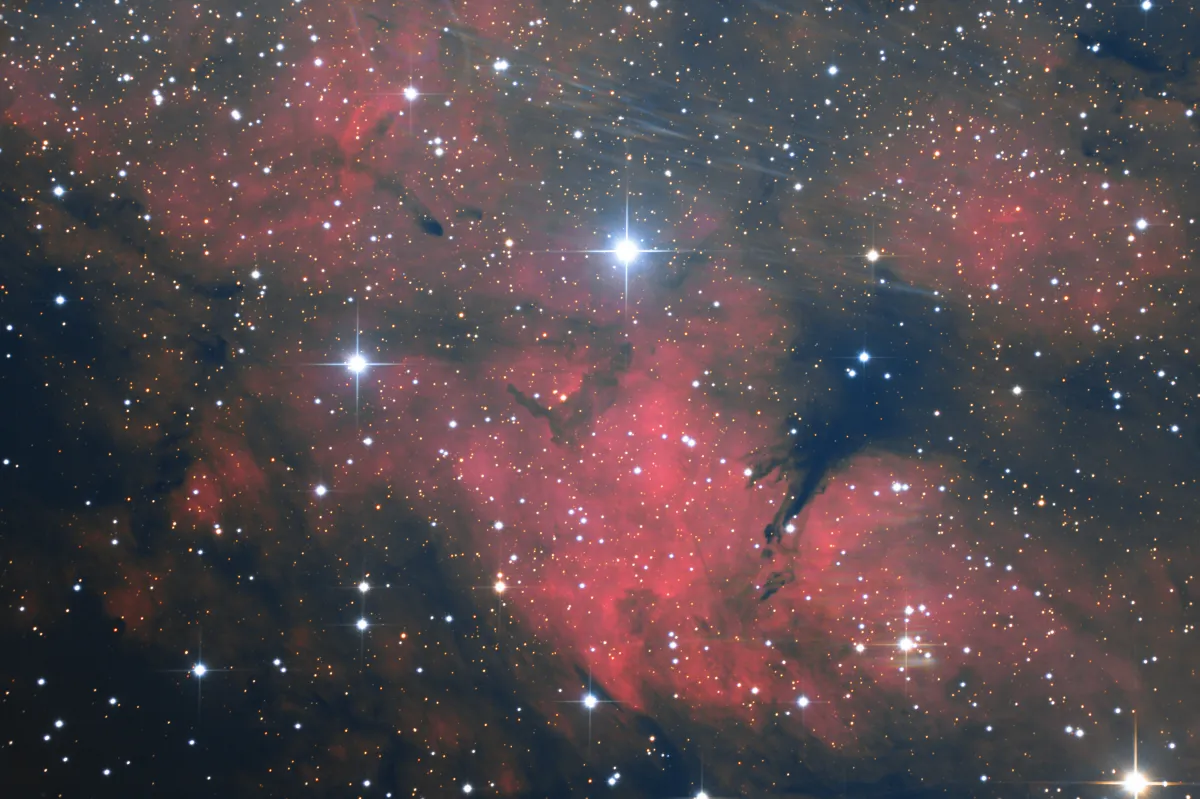
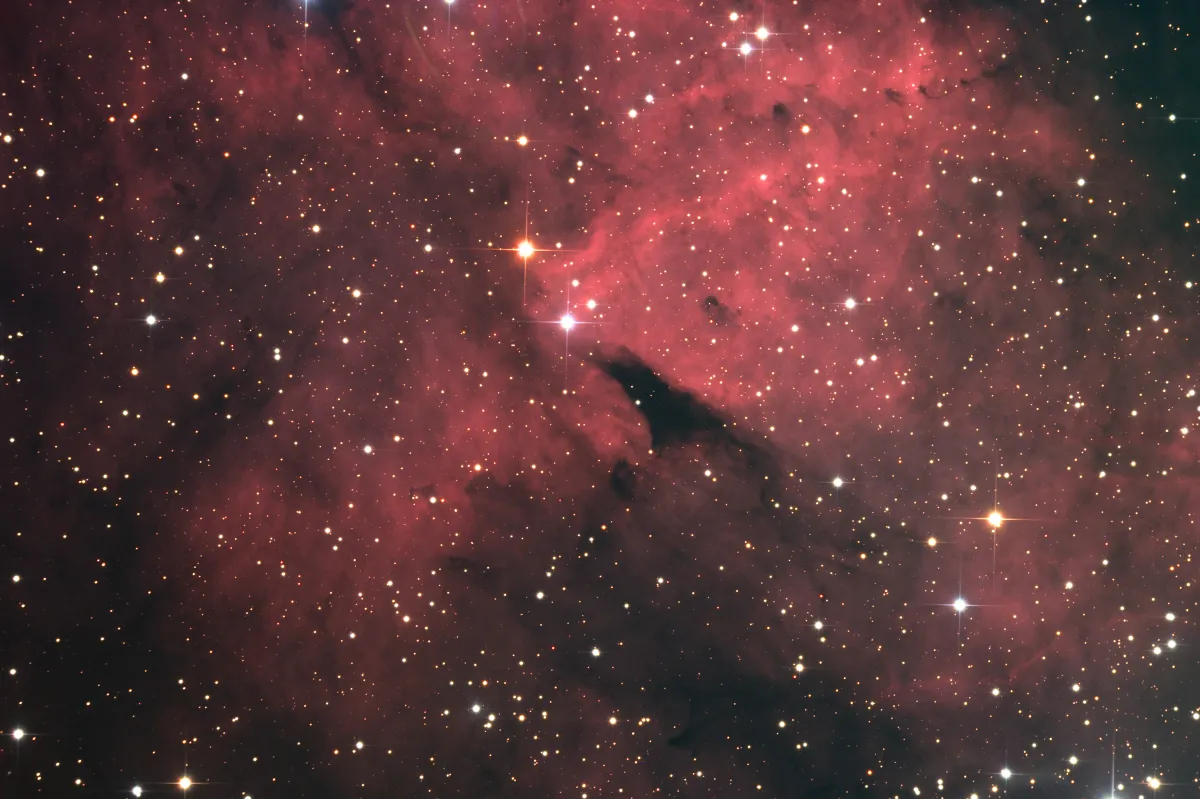
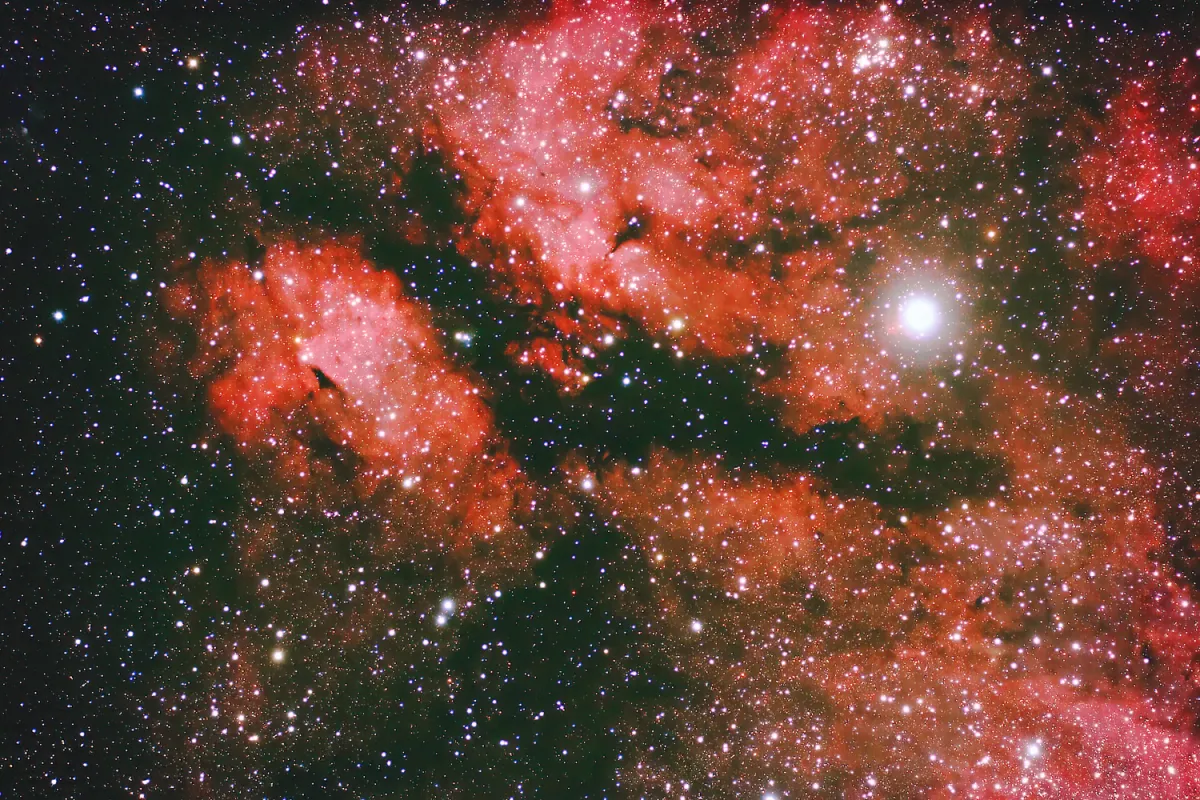
History
The open star cluster NGC 6910 was discovered on 17 October 1786 by the German-British astronomer William Herschel. He cataloged it as VIII 56 (Class VIII = coarsely scattered clusters of stars) and noted: «A small cluster of coarsely scattered stars of various sizes. Extended like a forming one.» [464] Due to its size and low brightness the galactic nebula IC 1318 was discovered much later photographically by the American astronomer Edward Barnard in August 1893. [196]
Physical Properties
NGC 6910 is a small star cluster with about 7.4 mag apparent magnitude, an angular expansion of about 8 arcminutes and the Trumpler type I2p. The distance is given by WEBDA with 1139 parsecs (around 3700 light years) and the estimated age with around 13 million years. [138, 196]
IC 1318 is a larger H-II nebula complex with emission nebulae and dark nebulae, which belongs to the large Cygnux-X star formation region. [196] The Gamma Cygni Nebula is the remnant of a supernova (SNR G78.2+2.1), which occurred here about 6'800-10'000 years ago and triggered the formation of new stars through this shock wave. The distance is about 1.7-2.6 kpc. The pulsar PSR J2021+4026 is located roughly in the centre. The Cygnus-X area is also a source of radio and X-rays. [378]
| Name | RA | Dec | Type | bMag | vMag | Dim | MD | Dreyer Description | Identification, Remarks |
|---|---|---|---|---|---|---|---|---|---|
| NGC 6910 | 20 23 12.0 | +40 46 43 | OCL (I2p) | 7.4 | 10 | 1.139 | Cl, pB, pS, P, pC, st 10…12 | WH VIII 56; h 2077; GC 4575; OCL 181 | |
| IC 1318 | 20 22 14.0 | +40 15 24 | EN | 50 × 30 | 1.200 | γ Cygni, surrounded by L patches of F neby | LBN 245; part of Gamma Cyg nebula | ||
| IC 1318 A | 20 16 36.0 | +41 49 00 | EN | 50 × 20 | γ Cygni, surrounded by L patches of F neby | LBN 251; part of Gamma Cyg nebula | |||
| IC 1318 B | 20 27 54.0 | +40 00 00 | EN | 14.9 | 45 × 30 | γ Cygni, surrounded by L patches of F neby | part of Gamma Cyg nebula |
Finder Chart
As the name suggests, the Gamma Cygni Nebula (IC 1318) is located at the star γ Cygni (Sadr) in the constellation Cygnus. The best observation time is March to December.
